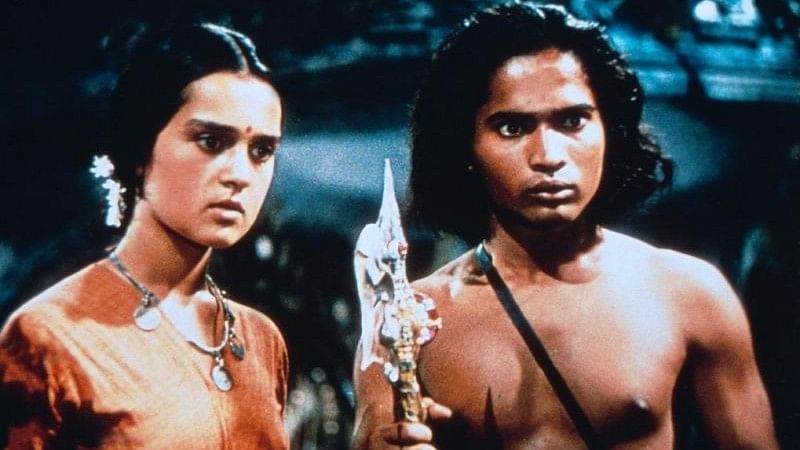
Adventure genres proved to be money spinners in Hollywood and Europe during the 1930s.
Filmmakers began to show interest in stories based in Asia and Africa. British filmmaker Alexander Korda and American documentary maker Robert Flaherty collaborated to adapt Rudyard Kipling’s short story ‘Toomai of the Elephants’.
Following the news of their arrival in Mumbai in 1935, and their plan to shoot in the forests of Assam, the then Mysore king Nalvadi Krishnarajendra Wodeyar offered help and assistance to shoot the film in Mysore’s forests.
Flaherty and his camera person Osmond Borradaile went on a recce along the banks of Kabini in HD Kote. They were also on the look-out for a boy to play Toomai, one who could bravely keep company with the elephant. After looking for two months, Borradaile spotted an elephant lifting a boy by its trunk and safely landing on its back. He immediately brought Flaherty to the scene and showed the 12-year-old Sabu frolicking with the elephants. That’s how Flaherty found his “elephant boy”.
Sabu’s early life
Born on January 27, 1924 in Karapur village near HD Kote, Mysore, Sabu Dastagir was the son of a mahout in the palace stable. As a young boy, Sabu did not attend school. He helped with the family chores. His only dream was to become the mahout of a royal elephant.
But tragedies took him by surprise. He lost his mother at a very young age of five. His father remarried. Soon his father too died when he was only nine. His step-mother left with her children, leaving Sabu and his brother to tend to themselves. They were hired by the Maharaja to work in the palace stables.
‘Elephant Boy’
Flaherty spent a year shooting in the forests of HD Kote and Kakanakote. They made changes to the story according to Sabu’s real life experiences. ‘Elephant Boy’ was released in 1937.
The film was about the life and adventures of a young motherless boy named Toomai, son of a mahout. Nurturing the dream of becoming a hunter, he lives with his father’s elephant Kala Naga. The film explores his adventures with the elephant.
The film became a hit. Flaherty and Zoltan Korda won the best director award at that year’s Venice Film Festival. The film’s success is credited to the story of the film and the interactions between the elephant and the boy, which was new to western audiences. Sabu, who caught everyone’s attention, became a sensation overnight.
Success, Hollywood and later life
Alexander Korda admitted him to a school in London to learn English. He produced three more successful films with him — ‘The Drum’ (1938), ‘The Thief of Baghdad’(1940), and ‘Jungle Book’ (1942). He played the role of Mowgli in ‘Jungle Book’, becoming the first actor ever to play the popular character.
During World War II, film activities were suspended in Britain and studios in the U S showed interest in him. He was cast by Universal Pictures in a series of exotic tales — ‘Arabian Nights’ (1942), ‘White Savage’ (1943), ‘Cobra Woman’ (1944) and ‘Tangier’ (1946). He played significant roles and shared the screen with actors like John Hall and Maria Montage.
Sabu, who became an American citizen in 1944 served the United States Army Air Forces and was awarded the Flying Cross for bravery. Following his discharge from the navy, he returned to post- war America and made a comeback in British films — ‘Black Narcissus’ (1947), ‘End of the River’ (1947) and ‘Man Eater of Kumaon’ (1948). They did not fare well and he soon moved to supporting roles. He was typecasted and could not evolve to perform diverse roles. He was also considered for the role of Birju in the magnum opus ‘Mother India’. But he was denied a work permit and the role went to Sunil Dutt.
Sabu married his co-star Marilyn Cooper and had two children. He was inducted into the Hollywood Walk of Fame in 1960. He died on December 2, 1963, of heart attack in Chatsworth, California. Tributes poured in highlighting not just his contribution to cinema but also his rise from rag to riches. In the immediate aftermath of his death there was a renewed interest in his body of work. His earlier films were revisited and a new generation of fans discovered the magnetic presence he brought to screen. Most of his films are preserved and are available for viewing.